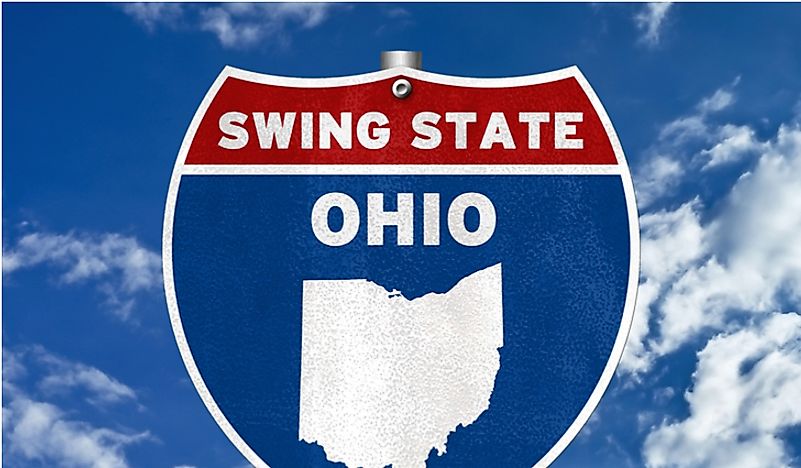What Is A Swing State In A U.S. Presidential Election?

What is a Swing State?
A swing state is a state that could potentially shift its preferences back and forth between the candidates of the two major political parties, the Republicans and the Democrats, in a U.S. Presidential Election. Swings states, which are also called battleground states, are in play in presidential elections where the popular vote is close so that the electoral college outcome is up for grabs. A swing state is one where either candidate could win the state, therefore winning its electoral votes and getting closer to getting the 270 electoral votes needed from the electoral college to clinch the presidency. In close presidential elections the small list of swing states basically decide the presidency. Swing states can shift back and forth each election either due to the fact that they have a almost even number of voters that are registered as Republicans and Democrats or because they have a large amount of swing voters who usually have no loyalty to either party and usually vote for the based on the individuals running.
Swing States in Past Presidential Elections
Arguably two of the past presidential elections where swing states had their biggest impact were in the 1888 and 2000 U.S. Presidential Elections. In the 1888 election incumbent Democratic president Grover Cleveland was running for reelection against Republican challenger Benjamin Harrison. Republicans hoped to flip the swing states of Connecticut, Indiana, New Jersey and New York, which all went to Cleveland in the 1884 election. Republicans attempt to quell defectors to the Prohibitionist party, which was growing in Connecticut, New Jersey and New York, while Democrats had to deal with the governor of New York and Tammany Hall as well as unhappy Civil War veterans in the state. In the end the Democrats managed to barely keep Connecticut and New Jersey, but the Republicans won New York and Harrison's home state of Indiana. These states were the only two to flip from the 1884 election but this gave the Democrats and Harrison the victory.
In the 2000 election, Democrat and former Vice President Al Gore was running against the Republican Governor of Texas, George W. Bush. In the 2000 election, there were considered to be as many as 20 swing states, but it all came down to New Hampshire and Florida. Bush won New Hampshire by 2% (around 11,000 votes) which gave him four electoral votes. Bush ending up winning the electoral college by 4 (271 to 267). New Hampshire was key because 34% of the states registered votes did not vote, meaning if only a fraction had vote Gore could have won the state and the election. Florida however was the state that generated so much controversy and a Supreme Court ruling. Bush won Florida by .01% (534 votes), which again Gore could have won if he got a fraction of the more then 30% of registered voters that did not vote. There was a disputed vote count in the state and the state went through several recounts and court challenges before the Supreme Court ruled a month later that the recount was unconstitutional because it was not state wide and it banned farther recounts, awarding the state and the presidency to Bush.
Swing states in the 2016 U.S. Presidential Election
In the upcoming 2016 U.S. Presidential Election between Democrat Hilary Clinton and Republican Donald Trump, there have been 11 key swing states designated as such by most political analysts. The swing states that have been identified for this election are mostly the same one as the last few presidential elections. These swing states are Colorado, Florida, Iowa, Michigan, Nevada, New Hampshire, North Carolina, Ohio, Pennsylvania, Virginia and Wisconsin. Both of the two major U.S. political parties held their Presidential nomination conventions in swing states in 2016. The Democratic National Convention was held in Philadelphia, Pennsylvania, and the Republican National Convention in Cleveland, Ohio.
In late summer polling, Trump and Clinton were basically deadlocked in Iowa, Nevada, and Ohio. As of August of 2016, Clinton has a slight 5% lead in Florida, New Hampshire, and North Carolina. In Colorado, Michigan, Pennsylvania, Virginia, and Wisconsin, however, Clinton has commanding leads. From the way things stand today, Clinton would win most of the swing states and easily win the election but there is still two and a half months to go, so Trump will still have his chances to change the electorate's collective mind.







